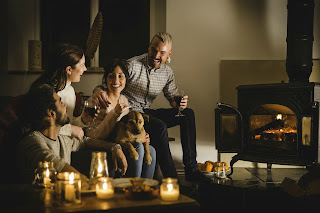For children, the excitement of Christmas is already unbearable, and the 25th December can't come quick enough. Counting down one day at a time feels like the longest journey ever, a little like setting off on a family holiday.
The reality is that for anyone else, those 25 days are just not long enough. The build up to Christmas can, and does, begin before December but there is something symbolic about the 1st day of advent. The festivities suddenly become socially acceptable, and people actually consider dusting down the Christmas jumpers.
In less than a month, there's seemingly so much to fit in and an abundance of festivities to tick off. The list of Christmas traditions is ever-growing and the opportunities for festive fun just keep on giving.
Advent calendars are a long-standing must, having gained popularity in Germany in the late 1800s. Early advent calendars simply presented a beautiful Christmas picture behind each of the 24 doors. Today, they come in all sorts of shapes and sizes with children (and adults alike!) enjoying anything from chocolates and sweets to toiletries and your favourite tipple.
And then there's the Christmas cards and the point at which the advent countdown becomes a race against time. It's a lovely festive gesture but a Christmas card list can soon get out of hand; writing the cards always takes longer than expected. Christmas card etiquette certainly divides the crowd too; there's the ones who send their greetings in November and those who miss the Christmas post deadline every year!
A certainty in most households though is the tree, without which, is Christmas really Christmas? The evergreen trend has been going strong since 1841 when Prince Albert put a Christmas tree up at Windsor Castle, marking the beginning of a wonderful tradition. The decorating of the tree is a happy time, each and every one capturing its own charm and setting the scene for Christmas morning.
But before the big man arrives, a visit to see him and talk about your wish list is a memory-making essential. Nothing beats the magic of a Santa's Grotto and for children, the anticipation of being on the 'naughty or nice' list is more than exciting. Christmas really is nearly here by now and attention can be turned to the festive menu.
Will it be a traditional turkey roast with all the trimmings? Trimming such as pigs in blankets, cranberry sauce and stuffing to name just a few. Until the 1950s, turkey at Christmas was deemed a luxury and to this day, it remains a wonderful festive treat. So too does figgy pudding; a Christmas staple laced with lush fruit and lots of alcohol. Traditionally made a week before advent on what is known as 'stir-up Sunday', a Christmas pudding is nothing short of a festive icon.
So, we've made it to planning the Christmas lunch, now to live Christmas Eve; perhaps one of the most magical nights of the year. A pantomime, Christmas Eve boxes, treats for Santa, stockings at the end of the bed and a little festive tipple. And surely, it's early to bed, because if you're not fast asleep, he won't come!











